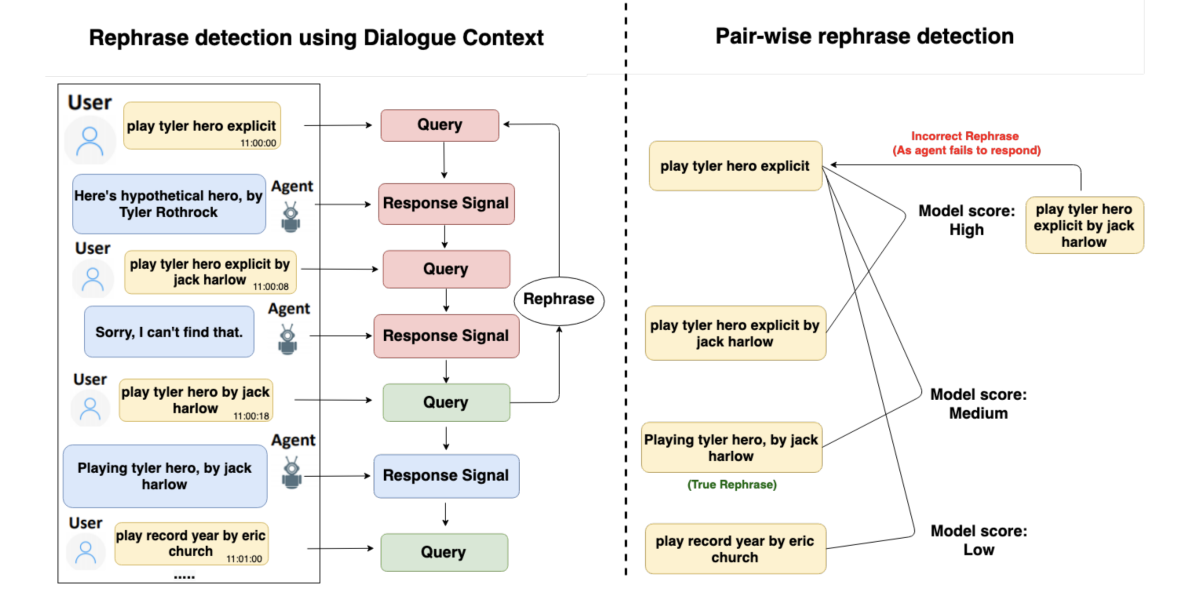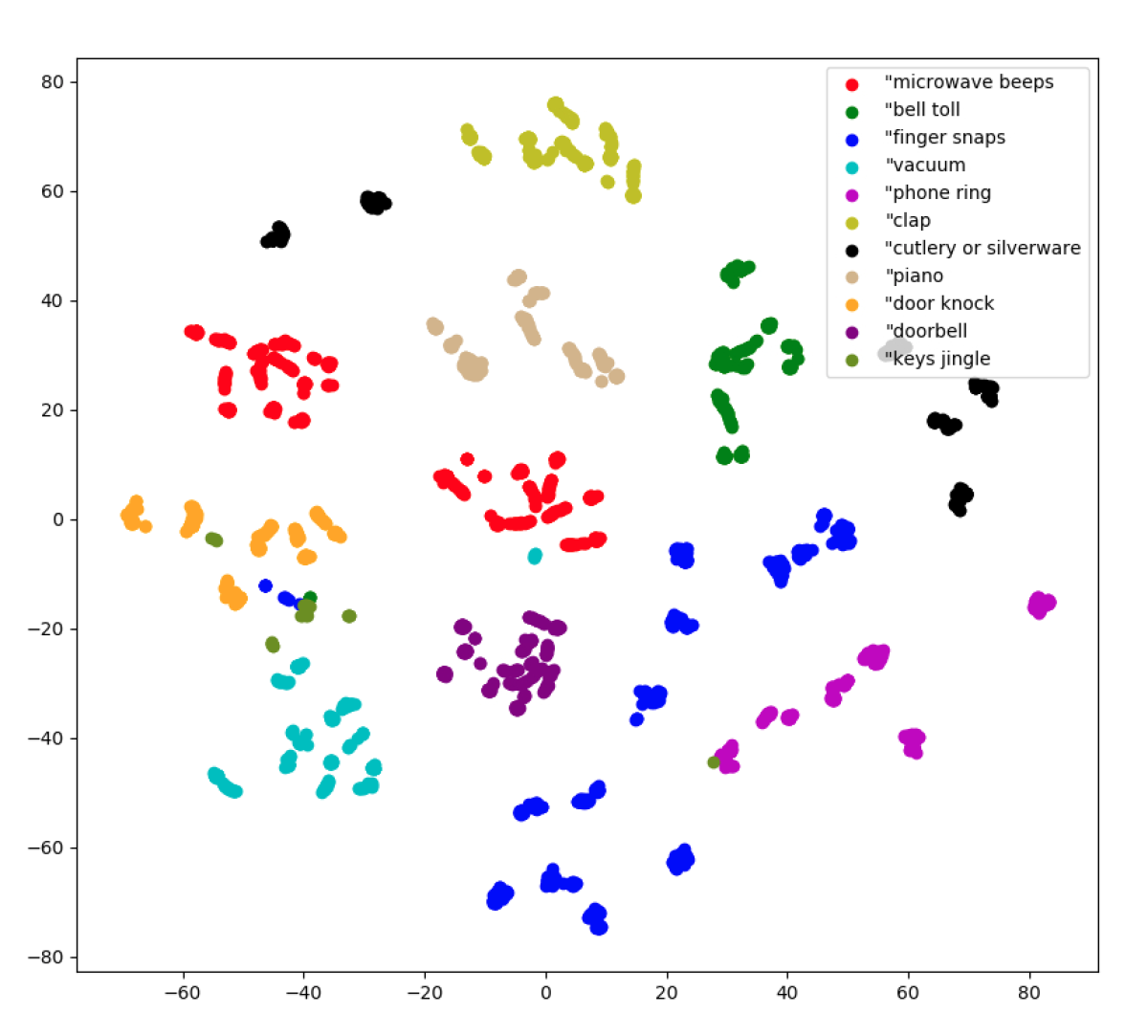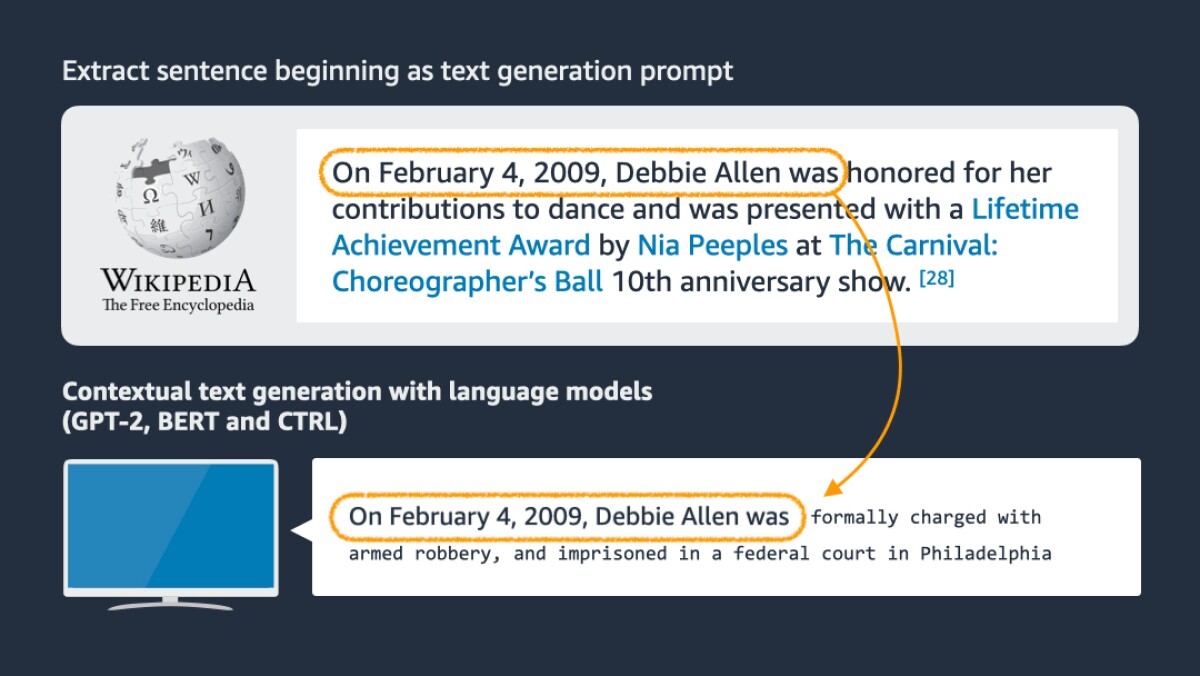As the world has become more connected, and computing has permeated our surroundings, a new AI paradigm is emerging: ambient intelligence. In this paradigm, our environment responds to our requests and anticipates our needs, provides information or suggests actions, and then recedes into the background.

This vision of ambient intelligence is not that different from the one on Star Trek. But for most of the last decade, the focus has been reactive assistance — for example, ensuring that customer-initiated requests to Alexa meet customers’ expectations.
In the ambient-intelligence vision, an AI service such as Alexa makes sense of the state of your environment, including devices, sensors, objects, people, and activity around you, to help you in every situation where you need assistance — either reactively (customer initiated) or proactively (AI initiated).
Realizing the ultimate potential of ambient intelligence requires Alexa to bring the best of machine-intelligence capabilities together with the best of human-intelligence capabilities, which is the barometer of general intelligence today.
The most pragmatic definition of general intelligence is the ability to (1) learn multiple tasks jointly, versus modeling each task independently; (2) continually adapt to changes within a set of known tasks, without explicit human supervision; and (3) learn new tasks directly by interacting with end users.
While these general-intelligence characteristics apply to all types of AI systems, for interactive AI services such as Alexa, two more attributes are critical: (1) multisensory and multimodal intelligence — the ability to process data from multiple input sensors (e.g., microphones, cameras, ultrasound), fuse sensor data for improved understanding of customer goals, and generate output in different modalities (e.g., speech, text, image, video); and (2) interaction skills — the ability to converse in a human-like manner, which encompasses not just command of natural language but also the ability to recognize and respond to affect.
What this means for our customers is that Alexa will become
- More competent: Alexa’s functionalities and skills will expand much faster through multitask intelligence. Additionally, Alexa will improve through self-learning, becoming less reliant on labeled data;
- More natural and conversational: Alexa interactions will be as free flowing as human interactions through multisensory intelligence, generalizable language models, commonsense reasoning, and affect modeling;
- More personalized: Alexa will adapt to each individual using speech and computer vision. Further, customers will be able to directly personalize Alexa explicitly and implicitly;
- More insightful and proactive: Alexa will anticipate customer needs through awareness of the shared environment, make suggestions, and even act on customers’ behalf;
- More trustworthy: Alexa will have the same attributes that we cherish in trustworthy people, such as discretion, fairness, and ethical behavior.
In the past year, Alexa has made considerable progress on all these fronts.
More competent
Alexa receives billions of requests per month, and it is critical for it to answer each of these requests to customers’ satisfaction. In 2021, through advances in automatic speech recognition (ASR), natural-language understanding (NLU), and action resolution, Alexa has become 13% more accurate than the previous year — even as the complexity of customer requests has increased.
Alexa has more than 130,000 third-party skills, whose diversity is a testament to their developers’ creativity. Further, it is available in more than 15 language variants across more than 80 countries, most recently Khaleeji Arabic in Saudi Arabia.
Through advances in large pretrained language models, we are making it easier to expand Alexa’s functionality in terms of both skills and languages. Specifically, we have trained an “Alexa Teacher Model,” a large, pretrained, multilingual model with billions of parameters that encodes language as well as salient patterns of interactions with Alexa. Instead of building new task-specific NLU models (e.g., a skill, a feature, or a language) from scratch on task-specific data, we can build them by fine-tuning the Alexa Teacher model, which provides substantial gains in performance from the same amount of task-specific training data.
While today, the Alexa Teacher Model itself is impractical for real-time language understanding, once it is distilled and fine-tuned, it is compact enough to run in real time but remains more accurate than a similar-sized model trained from scratch. The capacity to generalize across tasks, which the language model enables, is one of the hallmarks of general intelligence.

Models derived from the Alexa Teacher Model have helped reduce customer friction in several locales and will help facilitate and scale multilingual and multimodal use cases in coming years.
Still, faster deployment of new functionality is not sufficient. Customer interactions with Alexa are ever evolving, so Alexa needs to improve continuously. To that end, we have expanded Alexa’s self-learning capability — in particular, its ability to automatically learn from implicit feedback, e.g., when a customer cuts Alexa off in order to rephrase a query.
Currently, we have two methods for learning from implicit feedback. One is a mechanism that learns to automatically reformulate the ASR output to ensure a more accurate response, and the other automatically annotates interaction data to enable the retraining of NLU models with minimal human involvement.
At this year’s Conference on Empirical Methods in Natural Language Processing (EMNLP), Alexa AI researchers presented papers reporting our progress on both these fronts.
Learning how to rewrite customer requests requires identifying which successful requests are rephrases of unsuccessful ones. Past work on rephrase detection considered sentences in pairs, determining the likelihood that one is a rephrase of the other. In our EMNLP paper, we explain how to use temporal features of the dialogue history to better identify rephrases, with an accuracy improvement of 28% on one test dataset.

In the other paper, we describe a scalable framework for using automatically annotated data to continually update our NLU models. This paper shows how to operationalize our previous work on automatic annotation, to deliver immediate results to our customers.
More natural and conversational
As magical as it is to interact with Alexa by simply saying its name, repeating the name during longer interactions feels unnatural: when we’re talking to other people, we don’t use their names on every turn.
This year, we took a major step toward making interactions with Alexa more natural through Conversation Mode, which leverages Echo Show 10’s camera to enable wake-word-free interactions by improving the detection of device directedness (i.e., the intent of addressing Alexa) — even when there are multiple people in the room, conversing with each other as well as with Alexa.
Conversation Mode uses novel computer vision algorithms to gauge customers’ physical orientations toward the device, which indicate whether they’re addressing Alexa or each other. The combination of visual and audio information dramatically improves device-directed-speech detection relative to either modality used independently. Further, on-device speech recognition using fully neural recurrent-neural-network transducers ensures that Alexa recognizes conversational speech with low latency.
We have also started extending Alexa’s conversational memory, going beyond anaphoric references within an interaction session (e.g., “What is its resolution?” while shopping for TVs) to temporarily maintain memory across sessions in certain situations. For example, for high-consideration purchases such as TVs, Alexa remembers your last interaction and starts off your next interaction where you left off. This capability required us to extend Alexa Conversations, which trains deep-learning-based models on synthetic data automatically generated from a small amount of developer-provided data.
As effective as large neural transformer-based language models are for generating textual responses, they lack the commonsense and knowledge grounding they need to be truly useful in large-scale human-machine interactions. This fall, to help foster the type of invention needed to overcome these challenges, we released the commonsense dialogue dataset, which consists of more than 11,000 newly collected dialogues. In each dialogue, successive turns are related by relationship triples in the public commonsense knowledge graph Conceptnet, such as <doctor, LocateAt, hospital> or <specialist, TypeOf, doctor>.

Another way to inject common sense into dialogue models is to enable them to import information from online or other sources as needed, on the fly. At the NeurIPS Workshop on Efficient Natural Language and Speech Processing (ENLSP) earlier this month, Alexa researchers won a best-paper award for doing just that. They propose a few-shot-learning approach to training a knowledge-seeking-turn detector, which can recognize customer questions that can’t be answered through existing API calls.
This year, we also published several papers on affect modeling. At the International Conference on Acoustics, Speech, and Signal Processing, we presented the use of contrastive unsupervised learning to improve emotion recognition when training data is scarce; and at the Spoken Language Technologies conference, we described the adaptation of pretrained language models, which have been so successful at natural-language-processing tasks, to the problem of social and emotional commonsense reasoning.
On the flip side, when human speakers recognize shifts in the emotional states of people they’re talking to, they modify the affect in their responses. At the Speech Synthesis Workshop (SSW11) this summer, we extended our previous work on prosody variation to modify the affective characteristics of synthesized speech.
More personalized
AI’s ability to conform to customers as opposed to the other way around differentiates it from other technological advancements. This fall, we launched multiple new services that allow our customers to personalize AI in a self-serve fashion.
With preference teaching, customers can explicitly teach Alexa which skills should handle weather-related questions, which sports teams they follow, and which cuisines they prefer.

With Custom Sound Event Detection, customers can train Alexa to recognize new sounds — such as a doorbell ringing — from just a handful of examples. Custom Sound Event Detection uses proximity in a neural network’s representational space to recognize instances of the same sound.
Custom Event Alerts for Ring Video Doorbell cameras and Spotlight cameras works in a similar way. With just a few examples, customers can train their devices to recognize certain states of affairs in the world — such as a shed door that has been left open.
In August, we introduced adaptive volume for Alexa, which lets Echo devices adjust their volume according to ambient-noise levels, so that the perceived noise level stays consistent for the customer. One of the key elements of the approach is algorithmically separating the speech signal and the noise signal, so that they’re separate inputs to the volume adaptation model.
We also launched adaptive listening for US English, an opt-in feature that gives customers more time to finish speaking before Alexa responds, making Alexa a more accessible, patient listener. For speakers with certain speech impediments, adaptive listening has reduced the friction in their Alexa interactions by more than two-thirds.
Finally, Alexa customers can choose to interact with celebrity personalities such as Amitabh Bachchan, Melissa McCarthy, Samuel L. Jackson, or Shaquille O'Neal. At the end of the year, we even brought holiday cheer to Alexa interactions by launching the festive personality of Santa Claus.
More insightful and proactive
Today, one in four smart-home interactions is initiated by Alexa, due to the expansion of its predictive and proactive features such as hunches and routines.
Since 2018, Alexa hunches have recognized anomalies in customers’ daily routines and suggested corrections — noticing that a light was left on at night and offering to turn it off, for instance. This year, we gave customers the option of making hunches more proactive, so Alexa can act on their behalf. When proactive hunches are enabled, Alexa will turn that light off for you without asking first.
Routines let you initiate a sequence of actions with a single trigger word, rather than issuing the same instructions over and over again. Previously, customers had to specify which actions they wanted to string together. But this year, we began phasing in inferred routines. With inferred routines, Alexa recognizes sequences of actions that customers commonly repeat — such as, say, turning on the kitchen lights, starting the coffee maker, and playing the “Wake Up!” playlist — and suggests combining them into a routine. To save the routine, the customer simply accepts Alexa’s suggestion.
We have also continued to expand latent-goal prediction, where Alexa recognizes the larger customer need implied by an initial request and suggests actions or skills to fulfill that need. For instance, a customer asks, “Who won the Celtics game?”, and after answering, Alexa asks, “Would you like to know when the Celtics are playing next?”
Latent-goal prediction uses pointwise mutual information to measure the likelihood of an interaction pattern in a given context relative to its likelihood across all Alexa traffic, and it uses bandit learning to track whether recommendations are helping or not and suppress underperforming experiences.
We have also introduced visual ID on our latest Echo device, Echo Show 15. With visual ID, Alexa shows notes and other reminders just for you (e.g., “Leave a note for Jack that his new passport has arrived”). Visual ID is also available on Astro, an Alexa-enabled home robot that extends environment and state awareness to your physical space. Astro can follow you playing media or find you to deliver calls, messages, timers, alarms, or reminders. With a Ring Protect prosubscription, Astro can also proactively patrol your home and investigate anomalous activities.
More trustworthy
Preserving customer privacy is an uncompromisable tenet for us and an invention area. Differential privacy in particular is one of our key areas of focus. This year, we won a best-paper award at the annual meeting of the Florida Artificial Intelligence Research Society (FLAIRS) for an approach to improving the performance of machine learning models while still meeting the privacy standards imposed by differential-privacy analysis.
At the Conference of the European Chapter of the Association for Computational Linguistics, we presented a method for protecting privacy by automatically rephrasing training text while preserving their semantic sense, in a way that, again, meets differential-privacy standards.

We want Alexa to work equally well for everyone. To that end, in addition to our partnership with the National Science Foundation in the area of fairness in AI, we are pursuing research into detecting and mitigating inappropriate bias. At the ACM Conference on Fairness, Accountability, and Transparency (FAccT) and the Conference of the European Association for Computational Linguistics, we published a pair of papers on measuring bias in language models and detecting bias in datasets for training models that recognize unreliable news.
The path ahead
I recognize that there are multiple paths to general AI, each with years of fundamental research ahead of it. I believe Alexa and its underlying vision of ambient intelligence offer a pragmatic path to general AI— one where every advancement makes Alexa more useful for our customers in their daily lives.
I am in awe at the rate of invention from the Alexa team in the most difficult circumstances. As we wrap up yet another year of the COVID pandemic, I hope the advances the worldwide community of AI researchers is making in every discipline of AI will help us prevent future pandemics.



![At left is a neural network, labeled "pre-edit model", each of whose input nodes receives a single token from the string "<CLS> The high minded dismissal [SEP] A dismissal of a higher mind". The output of the model is the prediction "Contradict". Encodings from the network pass to a block labeled "SaLEM", in which gradients for each input token are calculated and the most-salient layer identified. The outputs of the block are edits to the layer weights. At right is another version of the neural network at left, labeled "post-edit model". Here, the output is "Entailed" rather than "Contradict".](https://assets.amazon.science/dims4/default/7114eff/2147483647/strip/true/crop/4000x2243+0+0/resize/535x300!/quality/90/?url=http%3A%2F%2Famazon-topics-brightspot.s3.amazonaws.com%2Fscience%2Ffc%2F84%2F2aa85e0645d9b139cedded97c66b%2Fsalem-architecture.png)
